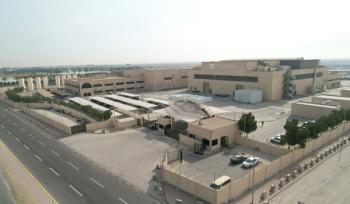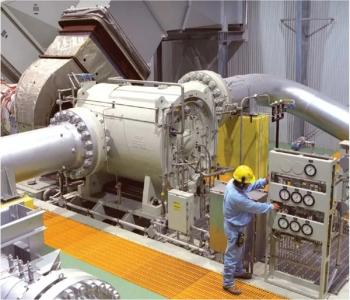
HOW CHANGING TURBINE TRENDS IMPACT THE MARKETPLACE
John Brewster, President and CEO of NAES, speaks about the changing world of turbine operations and maintenance
What trends are you seeing with regard to turbine operations and maintenance?
One of the most significant changes in the power industry is addressing the cyclic nature of dispatch. The industry used to base maintenance and repair forecasts on hours run for their turbines. The practice of frequently starting and stopping plants that were originally designed and built for base load has changed the way we plan maintenance and had led to more uncertainty in maintenance spending.
In recent months, and perhaps the biggest shift we’ve seen in many years has been brought about by low gas prices which has resulted in turbines running at a much higher capacity factor. Economics of combustion turbine generation, coupled with a very difficult regulatory and tolerance environment, have made this the technology of choice. Gas is just so much cheaper. This has changed the whole approach. I see combustion turbines as a major area of expansion in the foreseeable future.
What has changed over the last few years with regard to what users are requesting as to on-site turbine inspection and overhaul services?
More projects are schedule driven than in the past, due mainly to economic dispatch. Owners are requiring field service companies to have a higher sense of urgency and control of the outcome. This leads to including additional features during an inspection, such as parts repair (both in shop and on site) and parts expediting. Subcontracted support services we are now expected to supply can include controls & emissions tuning, steam path audits, borescope inspections, mobile cranes, turbine blade and bucket technicians, and high velocity oil flushes.
What advice would you offer to organizations with regard to the aftermarket?
Organizations should employ someone to study, understand and evaluate aftermarket providers. Their duties should also encompass staying up to date on what the OEMs are doing. Don’t wait until you need the part; that’s too late. Some providers may talk a good story, but don’t have the balance sheet or the testing background to provide the required level of reliability. It is important to understand the company, its leadership and the backing they have as these parts could impact a revenue stream for many years.
How about on the steam turbine side: Anything new, different or exciting happening in that arena?
We continue to perform onsite steam turbine work on virtually all manufacturer machines. NAES has a Houston service shop which can also perform diaphragm and valve repairs, in conjunction with field service projects. Additionally, we have recently added senior supervisors skilled at executing steam turbine major overhauls.
Further, with combined cycle economics, owners are looking to upgrade their steam turbines. It is, after all, a lot cheaper to do this than to build new MW.
Summarize the turbomachinery related services that NAES delivers
NAES inspects, repairs and overhauls major rotating equipment. This service is provided along with planning, scheduling, predictive maintenance and vibration analysis programs designed to minimize equipment downtime. NAES supplements field crews with technical assistance and repair services to support the field mechanical support as each project dictates, allowing for single source responsibility.
Tell me a fact about NAES that may be surprising to our readers
NAES not only works on generation equipment, but also is currently working on balance of plant, gas pipeline compressors, and refinery/petrochemical process equipment, such as ethylene and propylene trains.
Can you share some details about an innovative plant or project you are involved with?
NAES performed a major inspection on a steam turbine at the 230 MW Roanoke Valley Energy Facility (ROVA) located in Weldon, North Carolina, during a scheduled outage at the plant. The outage had an aggressive, around-the-clock schedule with a completion date of 30 days from the outage start. Some of the major disassembly and reassembly milestones included HP-IP turbine, LP turbine, generator, valves, steam path audit and diaphragm repairs (on and off site).
In addition to the planned milestones, the disassembly and discovery phases of the project indicated a need for considerable out-of-scope work, including a generator field rewind, generator stator rewedge, major turbine rotor offsite repairs, steam path alignment, and collector ring, bearing and other miscellaneous repairs (on and off site). NAES was able to source and schedule the additional repairs, which resulted in the project being completed in the scheduled timeframe.
One of the aspects of this project that makes it so successful was the ability to fold in all the out-of-scope work (particularly the field rewind & stator rewedge) and still maintain the schedule. The turbine field services team worked diligently to manage all the extra work sourcing.
Newsletter
Power your knowledge with the latest in turbine technology, engineering advances, and energy solutions—subscribe to Turbomachinery International today.





